Using the grid method – the technique of applying a grid to a reference photograph in order to enlarge it on your work
The grid method has been used for centuries by artists as a tool to create correct proportions, from Egyptians carving figures to Leonardo da Vinci and many modern artists such as Jack Vettriano.
Drawing from a reference photo can be difficult. In order to ensure your proportions and composition are correct, the grid method can be used.
To put it simply, the grid method breaks down your image into small, easy-to-draw segments of a larger image, ensuring they are copied correctly and are in the right proportions.
You can apply a grid to a reference image manually with a pencil and ruler, or digitally, using a PC or tablet.
To use the technique manually, get a hard copy of the image you want to use. You can work from a photograph, a page from a magazine, or a print-out of the image.

Once you have your reference image ready you can begin adding the grid (if working from a photo, you may wish to stick it onto a bigger sheet of paper to allow a margin).
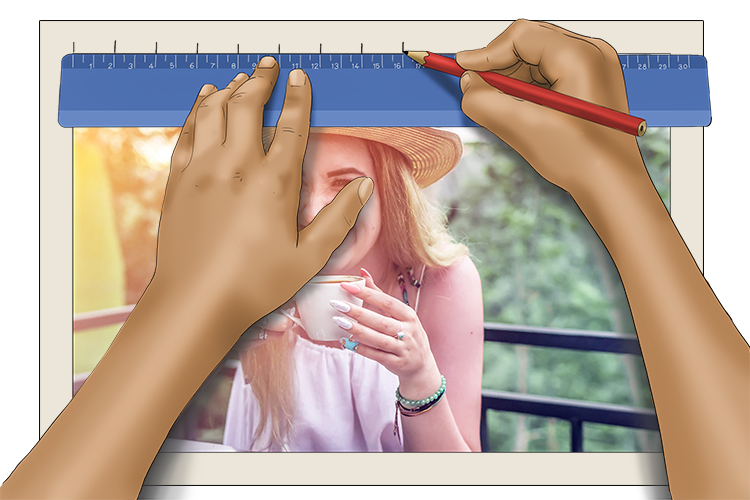
Start by making evenly spaced marks around the outside of your image (or the section of the image you wish to draw). These will be the points from which the grid will form, so think about the size of each tile you want to end up with (we have gone with 2cm). Continue the marks around all four sides.
Note: Consider the size and format of your finished image as, for example, you may wish to translate a landscape image into a portrait format.
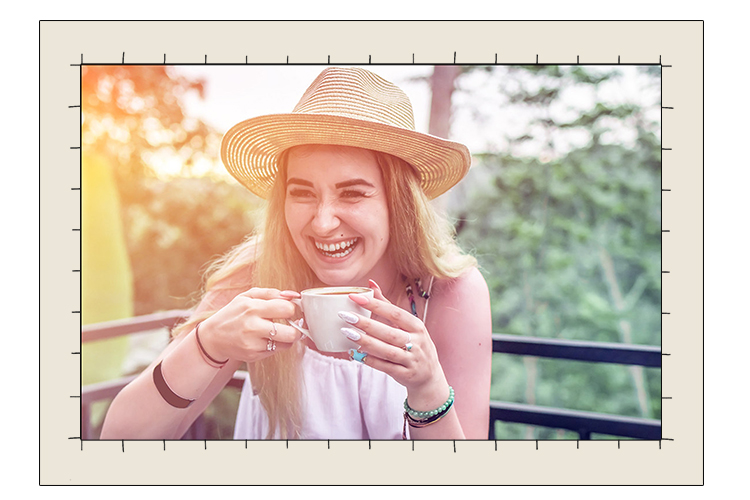
The next step is simple – joining the horizontal and vertical marks to form the grid. Once the grid is in place, label each axis, the horizontal with letters and the vertical with numbers, for example. This will make it easier to find specific squares when drawing from the grid.
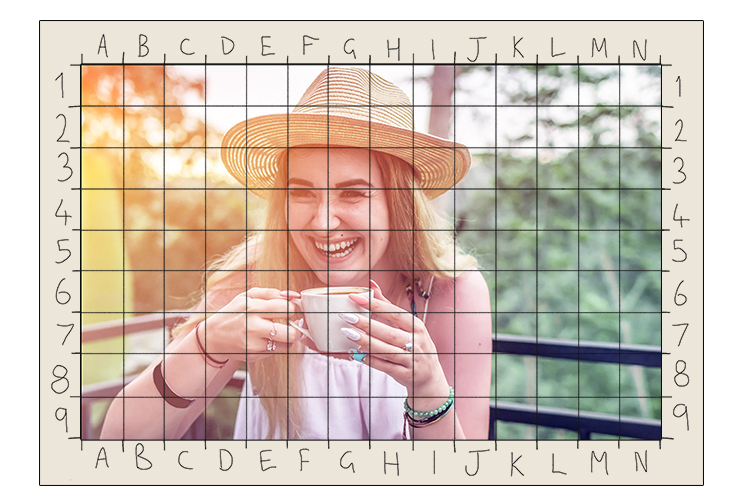
If you are creating the grid using a PC or tablet (which many artists do now), find the image you wish to copy or take a photo using the device. You can open the image in an editing program and apply a grid over the top (many programs offer a grid but if not you could draw out a grid using a line tool). Keeping the image on a screen with a grid drawn on top allows you to zoom in and move the image around with the grid staying in place. This is useful for focusing on individual squares of the grid if you are looking for small details.
Whether you have drawn the grid by hand, or you have superimposed one onto your image digitally, the technique is the same from now on.
Now the image you wish to copy is gridded up, we need to focus on the artwork you are going to make.
Start by getting the canvas, paper, or whatever ground you wish to work on (for our version we have used a canvas). Draw a new grid onto the canvas in pencil (lightly if possible). Make the grid the same shape as the one on your photo. For example, if your original grid is 14 squares x 9 squares like ours, make the new grid the same.
If you wish to enlarge or decrease the proportions of the original, simply carry out the following calculations (using a calculator if necessary):
1. Measure the width of your canvas, board or paper.
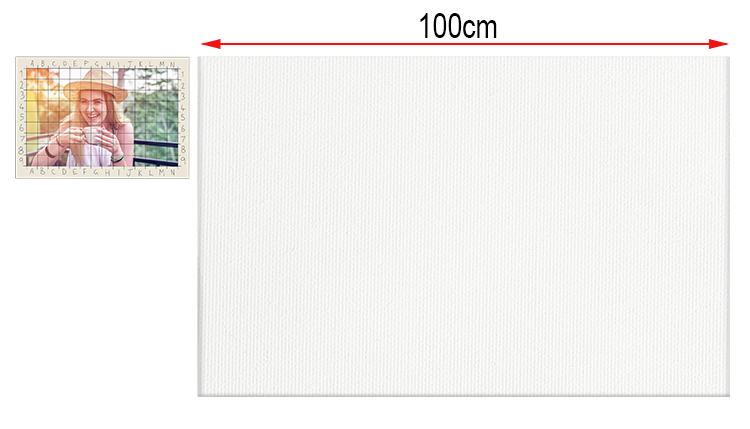
2. Divide that figure by the number of squares on the width of your gridded image (e.g., our canvas is 100cm wide and our gridded photo is 14 squares wide, so 100÷14 = 7.1cm)

3. Mark out points across all four sides of your canvas separated by the answer to your sum (7.1cm apart in our example).
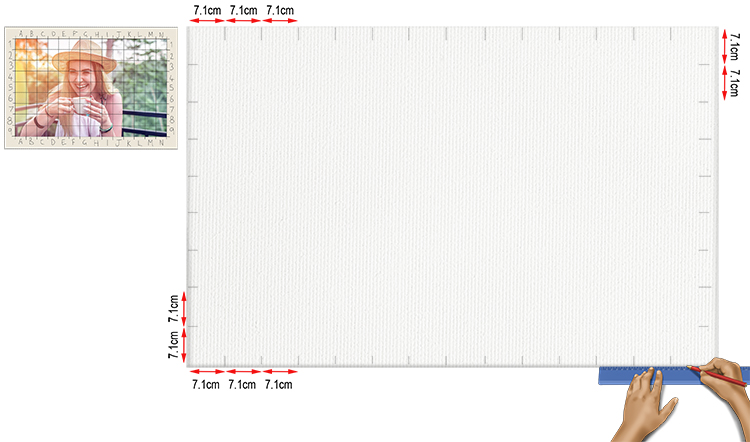
4. Join the points to create a grid and you will have a perfectly scaled-up version of your reference grid. Mark the axes with numbers and letters, the same as you did with your reference grid.

Your grid is now ready to use.
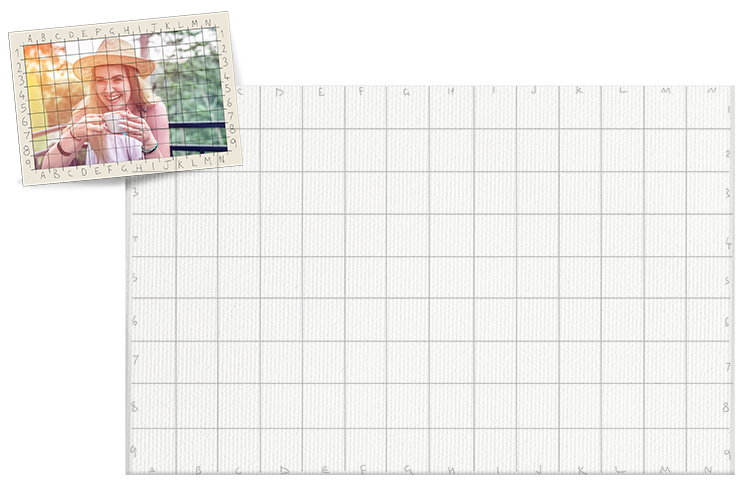
The hard work is over – all that is left to do is use the grid for your drawing. All you have to draw is the detail from each square, breaking the image down into a series of tiny ones rather than the whole. You can start anywhere on the grid you like – if you lose the tile you are working on, simply use the axis letter and number to find it, e.g. tile G5 on the image below.
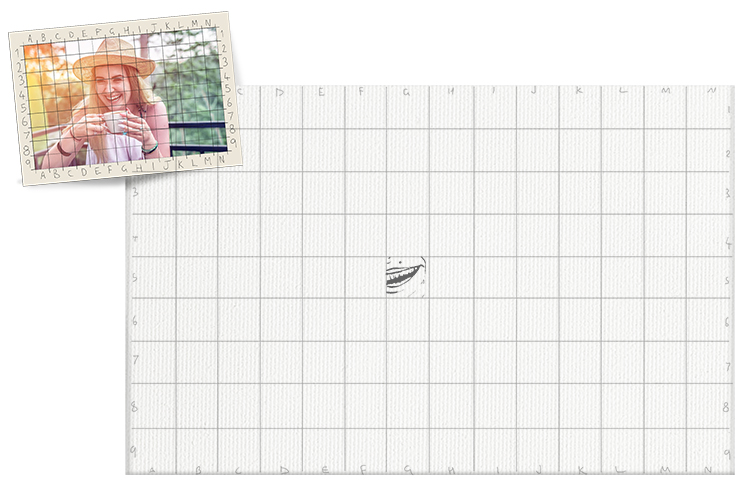
Continue working tile by tile until your drawing is complete.

Once you are happy with the sketch you have created using the grid, you can remove the gridlines lines with an eraser. Continue to work on the image, whether it be in paint, pencil or any other medium.




